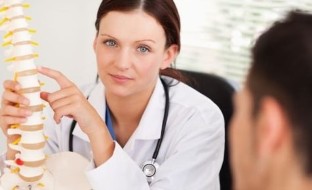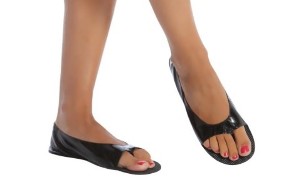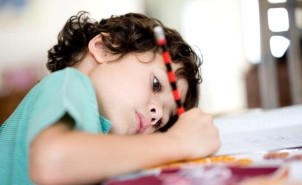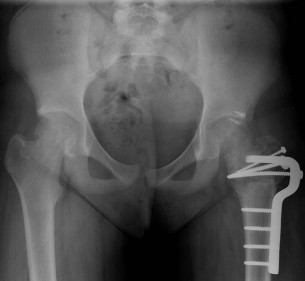Technical progress is a maximum to facilitate the life of modern man. There, where formerly stood the mills and factories, now for the most part, bars shopping and entertainment centers, movie theaters and beauty salons. The process of production of goods almost completely mechanized and electronic. And the production sphere gradually replaced by services. The man meanwhile, the hours of sitting in the office, trying to come up with another way of effective sales, marketing move helena another option to get the money from other purses. And then gets into the car and comfort, in easy-to-read the driver's seat of a chair ride home. Of course, we drew a perfect picture, where it's not about traffic jams on the road, stuffy offices, public means of transport that has a significant portion of the population, and so on, But who wants to live comfortably?

However, many benefit from such a convenience? Our age is already declared as the century of hypoaktivita, which carries a lot of unpleasant consequences. Cardio-vascular disease, massive obesity, hypertensive disease, sciatica and other diseases come complete with a personal car, soft office chairs and a private study. But the most common diseases, which we are paying the price for a sedentary lifestyle, osteochondrosis. It is to him will be dedicated to this article.
Osteochondrosis
What is osteochondrosis? Consider the mechanism of development and types of the disease, When we hear about osteochondrosis, then in the first place we think about pain in the back and in the muscles. However uncle about yourself disease of the right muscular apparatus does not affect. Pathological changes arise on the skin, which are available in all the joints of our body.
Cartilage tissue performs a protective and cushioning functions. In addition, it secretes a special secret, which lubricates the articular surface, which reduces friction during movement of the bones. But in some cases the cartilage of the fabric to wear out (degenerate). In addition, in metabolic disorders, lack of certain vitamins and trace elements, as well as in the hereditary metabolic failure is the impaired nutrition of the cartilage tissue, and he loses its firmness and elasticity. This state bears the name of the dystrophy.
So, osteochondrosis – is degenerative-degenerative changes of the cartilage. In theory, pathological changes may affect any joint. But in practice, osteochondrosis most commonly affects our spine. And depending on what part of the spine localized process, we distinguish between lumbar, thoracic and cervical degenerative disc disease.
Let's imagine our spine. It consists of individual skeletal bodies of the vertebrae. Every vertebra has a body and several processes. Between the body and the branches has a hole through which passes the strand of the spinal cord. The vertebrae are arranged in such a way that the holes form a hollow tube – the spinal canal. Of your body the vertebrae are placed one above the other and between them are the intermediate layer of cartilage – the intervertebral cartilage discs. Performs the function of a shock absorber, softening the bumps and reduces the load on the spine when walking helena other human activities. The vertebrae have a similar building, and vary in size. The exception of a few fused vertebrae sacro-coccygeal department and the seven elements of the cervical spine,which differ from each other in structure.

The spine is represented by four departments:
- cervical (c 1-th 7-th vertebra);
- thoracic (with 8-th to 12-th);
- lumbar (from 13-th to 18-th);
- the sacrum and coccyx (this department consists of stationary associated bone, and therefore is not involved in the disease process).
Respectively, osteochondrosis of the spine are divided into three basic types, which we represent higher.
Types of degenerative disc disease
Most often it occurs osteochondrosis of the neck, as the neck vertebrae have a different structure, and muscular apparatus, which supports the spine in this area is developing fairly weakly. Over time in cervical helena in any other department of the spinal disc of hyaline cartilage begins to compact, it loses its strength, and the vertebrae come closer to each other. The result of this can be pinched nerve fibers helena vessels. The result is a disturbed innervation and blood supply to the competent authorities, which sees the faults in their work, reduction of physical activity, pain of developing the syndrome. In addition, when the bias of the vertebrae, its processes can irritate the muscle tissue in the area, which sees to a spasm of the muscles. And after all, on the background of the disease, the release of the muscular apparatus, and so has to fulfill a double job, a compensatory reduction in the cushioning function of the spine and changing the position of the vertebral bodies.
Along with the neck, quite often occurs also sciatica osteochondrosis which develops on the background of periodic high load on your back, weight lifting and so on.
Thoracic osteochondrosis develops somewhat less than the first two variants of the disease. In addition, its diagnosis is hampered by the fact that the disease has several non-specific symptoms similar to the symptoms of angina pectoris. Special mention deserves the fact that, by themselves, of your body the vertebrae, cartilage, nerve fibers, pain and the spinal cord are not equipped with pain receptors, and this means that pain in osteochondrosis of the wear of the subsequent character. Osteochondrosis are also considered as some varieties Osteochondropathy, which have a somewhat different etiology. About them we'll talk more about in our article.

The causes of the disease
The main reasons for the development of degenerative disc disease – hypoaktivita – we started your story. As they say, the movement – life! As lack of sufficient physical activity may have an impact on the state of our joints and spine? The thing is that our rotation has a natural muscular corset that supports the spine and helps him to properly perform its functions. However, when the lack of physical activity the muscular apparatus is weakened, the spine loses support, the main burden falls on the intervertebral cartilage disks, how over time exposed to the degenerative changes.
However, excessive physical stress, as among professional athletes, can also lead to macular degeneration and dystrophy of the cartilage, and this means that trigger the development of degenerative disc disease and other Osteochondropathy. Respectively, in this direction it is necessary to stick to the golden mean, to avoid health problems.
An important role in the development of degenerative disc disease plays a style of life of modern man. In addition to the lack of sufficient physical activity, here it is possible to include unbalanced diet, lack of necessary vitamins and minerals in the diet, Smoking, drinking alcohol, use in everyday life and in the workplace improper furniture, sleeping on a soft mattress, it is habitual bad posture of your body, driving motor vehicles, working conditions and stuff
In the complex all inevitably see to a deterioration in nutrition of the cartilage, the loss of its qualitative properties (strength, elasticity, flexibility) and the development of degenerative disc disease. Flat feet – is another fairly common cause of degenerative disc disease. It would seem, what attitude the deformation of the arch of the foot, you may have headaches in the lower part of the back, and the more in the neck? It turns out, the immediate. The foot of man is arranged so that it is able to correctly distribute the weight of your entire body while walking. In the process of evolution of the bones of the foot form two arches – longitudinal and transversal. Thanks to this structure, together with the advent of physiological bends of spine, it is possible bipedalism of man. If the vaults for one reason or another settle, the entire load is transferred to the spine. And even back pain and limitation of range of motion, and even migraines.
In recent years, many scientists are inclined to believe that in many respects the development of degenerative disc disease has influence of heredity.
Symptoms of degenerative disc disease
How to recognize osteochondrosis? Symptoms of degenerative disc disease is very diverse. Even though most of us know only about the main symptoms of this disease: muscle pain and problems in movement. However, we do not in vain is a quite detailed talk about the mechanism of development of degenerative disc disease. Because the symptoms of this disease are directly associated with the processes that occur during the development of the pathology.
So, as we already know, all the symptoms of degenerative disc disease are associated with the automatic blood vessels and nerve fibres with a subsequent violation of the innervation and nutrition of the respective muscles, organs and tissues. And this means that pathological changes will affect not only the muscular apparatus. So, symptoms of cervical degenerative disc disease is, and frequent headaches, and even dizziness, along with pain in the muscles of the neck and shoulder girdle.

Headaches with cervical osteochondrosis has vascular origin: the circulation of blood in the tissues of the brain is disrupted, and nerve cells, occurs hypoxia. With it is associated and dizziness, which sometimes can reach up to unconscious states. Violation of blood supply associated with cervical osteochondrosis, in rare cases, it may also lead to a reduction in hearing the patient, disruption of the coordination of movement (instability of gait), hoarseness of the voices. Snoring can also testify about the development of degenerative disc disease.
If degenerative changes relate to the intervertebral disks of the parent department of the thorns , then the osteochondrosis would manifest pain in the back of the appropriate localization, connectivity asthmatic component, heart pains. Sometimes the patient may appear shortness of breath and arrhythmia. Often patients are confused by the emergence of cardialgia with coronary heart disease (thoracic toad). But with this type of heart pain there are still a number of distinctive features. Subjectively may be seen as "the count" on his chest. Intake of nitrates and other antianginal funds is not relieving the pain. In angina in humans increases anxiety, and even fear of death. Thoracic osteochondrosis does not have such symptoms. Sometimes cardialgia caused by osteochondrosis of the spine can take a few days, but it's not threatening a person's life. Ischemic pain in the heart of the short-term, but ignoring them can lead to the development of myocardial infarction, and later provided medical assistance during an attack of angina pectoris may become the cause of lethal outcome.
Osteochondrosis of the lumbar-sacral spine is characterized by pain in the lower part of the back. The pain may radiation to the lower extremities. The patient may also experience difficulty in walking, which is associated with a decrease in the tone innervated by the data segment of the spinal cord, muscles. The pains are shooting in nature. Sometimes the patient becomes difficult to straighten the back, get out of bed, helena change the position of your body. Reflexes of the lower extremities in osteochondrosis of the lumbar-sacral department reduced.
Osteochondropathy
We have already covered in this article such a problem, like a child's osteochondrosis. Symptoms and treatment of this pathology is somewhat different from such in the adults. Mainly related to the, concept of children's degenerative disc disease includes several different Osteochondropathy. The most common are:
- disease Keller,
- the disease of Osgood–Schlatter,
- disease Chairman-May,
- the disease Legge-Calvet-Peters.
Disease Keller occurs in children aged from 8-to 12-years, but also can develop even in adulthood, that happens much less often. In this pathology affected the spongy substance of the bones of the foot. In addition, issue two main types of this disease. When the disease Keller the first type of affected navicular bone. If the disease continues to the second type, then the pathological changes relate to the metatarsal bones.
Schlatter disease affects the tibial bone in the area below the knee cup and develops in the age group from 11 to 14 years. Predisposing factors are sports (football, basketball, running, jumping, etc.). Also the incidence of the disease may be caused by the mismatch of the speed of bone growth in adolescents and the development of cartilage.
Disease Chairman-May helena curvature of the spine, is one of the variants of thoracic degenerative disc disease. Developing this pathology, as usual in children and adolescents aged from 8-to 14-year-old, but a long time neither the child nor the parents may not notice any major deviations. A visible symptom is a disorder of the possession of your child's body.

Disease Legg-Calv-Perthes disease – is a pathology that affects the femur, specifically, his head, in the area where is located the cartilage of the fabric. Most often this disease affects children 4-x 14-years of age and manifests itself in them limp. In this disease the arise of necrotic changes in the tissues of the head of the femur, which are non-transferable (aseptic) character. Most often the cause of the disease is a hereditary predisposition. In the first stages the child begins to limp. Later in the child appear to pain in the hip and knee, especially during motion.
Prevention of degenerative disc disease in childhood is moderate to heavy physical exertion, wearing of comfortable footwear, repair and maintenance of the proper posture of your body, for which there is a special set of exercises. Osteochondrosis and pregnancy Surely, if a woman suffering from osteochondrosis, then when planning a pregnancy, must in advance to do the treatment of this disease. Although a permanently cure such diseases, it is impossible to fully restore the cartilage cannot be.
Together with sufficient physical activity, moderation and balance in eating will help you to bring back to normal your weight and subsequently keep him under control. Normal weight – a guarantee of your good health and the health of your back. And a healthy back – this is a powerful and robust restorative sleep and the lack of headaches and the prevention of other diseases of the musculoskeletal system. Love yourself, give yourself more attention and care to your health!































